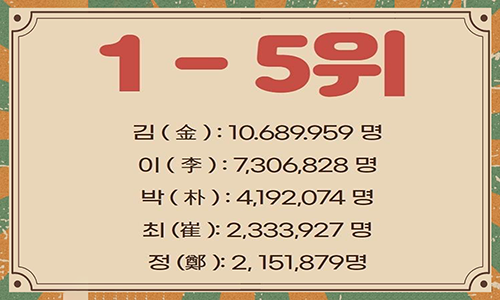Hangeul-Hanja/Hanja-Hangeul Dictionary
Explore seamless Hangeul-Hanja conversions with our advanced online dictionary. Master Korean characters and Hanja with user-friendly features designed for all skill levels. Enter Hangeul or Hanja below and click Look Up.
유기 Search Result
| Hangeul | Hanja | Explanation |
|---|---|---|
| 검유기 | 檢乳器 | |
| 경유기관 | 輕油機關 | |
| 고유기 | 枯乳期 | |
| 국가유기체설 | 國家有機體說 | |
| 금속유기화합물 | 金屬有機和合物 | |
| 급유기 | 給油機 | |
| 김유기 | 金裕器 | |
| 내유기 | 內遊期 | |
| 노잔유기 | 老殘遊記 | |
| 돌연변이유기물질 | 突然變異誘起物質 | |
| 등유기관 | 燈油機關 | |
| 만유유기체설 | 萬有有機體說 | |
| 망유기극 | 罔有紀極 | |
| 변이유기물질 | 變異誘起物質 | |
| 부유기관 | 浮遊器官 | |
| 부유기뢰 | 浮遊機雷 | |
| 사체유기죄 | 死體遺棄罪 | |
| 사회유기체설 | 社會有機體說 | |
| 생유기 | 生油氣 | |
| 서유기 | 西遊記 | |
| 석유기 | 石油機 | |
| 석유기관 | 石油機關 | |
| 선패유기 | 善敗由己 | |
| 섬유기계 | 纖維機械 | |
| 섬유기사 | 纖維技士 | |
| 섬유기사보 | 纖維技士補 | |
| 섬유기원 | 纖維技員 | |
| 섬유기원보 | 纖維技員補 | |
| 섬유기좌 | 纖維技佐 | |
| 소유기 | 疏油基 | |
| 수유기 | 授乳期 | |
| 수유기름 | 茱萸기름 | |
| 유기 | 有機 | |
| 유기 | 遺棄 | |
| 유기 | 有期 | |
| 유기 | 鍮器 | |
| 유기 | 幼期 | |
| 유기 | 乳氣 | |
| 유기 | 柳器 | |
| 유기 | 遺記 | |
| 유기 | 遊技 | |
| 유기 | 劉基 | |
| 유기 | 留記 | |
| 유기 | 由起 | |
| 유기 | 幽奇 | |
| 유기 | 유機 | |
| 유기감각 | 有機感覺 | |
| 유기감정 | 有機感情 | |
| 유기계 | 有機界 | |
| 유기고분자 | 有機高分子 | |
| 유기공채 | 有期公債 | |
| 유기관 | 類器官 | |
| 유기광물 | 有機鑛物 | |
| 유기광물질비료 | 有機鑛物質肥料 | |
| 유기규소화합물 | 有機硅素化合物 | |
| 유기그릇 | 鍮器그릇 | |
| 유기금고 | 有期禁錮 | |
| 유기금속화합물 | 有機金屬化合物 | |
| 유기노 | 劉寄奴 | |
| 유기노초 | 劉寄奴草 | |
| 유기농 | 有機農 | |
| 유기농업 | 有機農業 | |
| 유기도형 | 有期徒刑 | |
| 유기론 | 有氣論 | |
| 유기론 | 唯氣論 | |
| 유기물 | 有機物 | |
| 유기물 | 遺棄物 | |
| 유기물감속형원자로 | 有機物減速型原子爐 | |
| 유기물냉각형원자로 | 有機物冷却型原子爐 | |
| 유기물질 | 有機物質 | |
| 유기반도체 | 有機半導體 | |
| 유기비료 | 有機肥料 | |
| 유기산 | 有機酸 | |
| 유기산에스테르 | 有機酸에스테르 | |
| 유기상환공채 | 有期償還公債 | |
| 유기성 | 有機性 | |
| 유기성생물 | 有氣性生物 | |
| 유기수 | 有期囚 | |
| 유기수은 | 有機水銀 | |
| 유기수은제 | 有機水銀劑 | |
| 유기수은중독 | 有機水銀中毒 | |
| 유기시약 | 有機試藥 | |
| 유기실란 | 有機실란 | |
| 유기안료 | 有機顔料 | |
| 유기암 | 有機巖 | |
| 유기약품공업 | 有機藥品工業 | |
| 유기양분 | 有機養分 | |
| 유기업 | 遊技業 | |
| 유기연금 | 有期年金 | |
| 유기염 | 有機염 | |
| 유기염소제 | 有機鹽素劑 | |
| 유기염소중독 | 有機鹽素中毒 | |
| 유기영양 | 有機營養 | |
| 유기영양생물 | 有機營養生物 | |
| 유기용매 | 有機溶媒 | |
| 유기용제 | 有機溶劑 | |
| 유기유리 | 有機琉璃 | |
| 유기유황살균제 | 有機硫黃殺菌劑 | |
| 유기유황제 | 有機硫黃劑 | |
| 유기음 | 有氣音 | |
| 유기인산에스테르 | 有機燐酸에스테르 | |
| 유기인제 | 有機燐劑 | |
| 유기장 | 遊技場 | |
| 유기장 | 柳器匠 | |
| 유기장 | 鍮器匠 | |
| 유기장군 | 遊騎將軍 | |
| 유기장이 | 柳器장이 | |
| 유기재감속원자로 | 有機材減速原子爐 | |
| 유기적 | 有機的 | |
| 유기적관련성 | 有機的關聯性 | |
| 유기적단체 | 有機的團體 | |
| 유기적사회형 | 有機的社會型 | |
| 유기적세계관 | 有機的世界觀 | |
| 유기적연대 | 有機的連帶 | |
| 유기전자론 | 有機電子論 | |
| 유기죄 | 遺棄罪 | |
| 유기질 | 有機質 | |
| 유기질비료 | 有機質肥料 | |
| 유기질소유황제 | 有機侄素硫黃劑 | |
| 유기질토양 | 有機質土壤 | |
| 유기질흙 | 有機質흙 | |
| 유기징역 | 有期懲役 | |
| 유기체 | 有機體 | |
| 유기체론 | 有機體論 | |
| 유기체설 | 有機體說 | |
| 유기초 | 有機礁 | |
| 유기촉매 | 有機觸媒 | |
| 유기태인산염 | 有機態燐酸鹽 | |
| 유기태질소 | 有機態窒素 | |
| 유기피막 | 有機被膜 | |
| 유기한 | 有期限 | |
| 유기합성 | 有機合成 | |
| 유기합성살충제 | 有機合成殺蟲劑 | |
| 유기합성화학 | 有機合成化學 | |
| 유기형 | 有期刑 | |
| 유기화학 | 有機化學 | |
| 유기화학공업 | 有機化學工業 | |
| 유기화합물 | 有機化合物 | |
| 유기황살균제 | 有機黃殺菌劑 | |
| 유기황제 | 有機黃劑 | |
| 유출유기 | 愈出愈奇 | |
| 이유기 | 離乳期 | |
| 자유기구 | 自由氣球 | |
| 자유기업 | 自由企業 | |
| 점유기관 | 占有機關 | |
| 제유기 | 製油機 | |
| 주유기 | 注油器 | |
| 주유기 | 注油機 | |
| 중앙집유기지 | 中央集油基地 | |
| 중유기관 | 重油機關 | |
| 직무유기죄 | 職務遺棄罪 | |
| 착유기 | 搾油機 | |
| 착유기 | 搾乳機 | |
| 창유기서 | 創有奇書 | |
| 천연유기화합물 | 天然有機化合物 | |
| 친유기 | 親油基 | |
| 쾌유기 | 快癒期 | |
| 포유기 | 哺乳期 | |
| 포유기간 | 哺乳期間 | |
| 회유기만 | 懷柔欺瞞 | |
| 휘발유기관 | 揮發油機關 | |
| 흡유기 | 吸乳期 | |
| 흡유기 | 吸乳器 | |
| 희유기체 | 稀有氣體 | |
| 희유기체원소 | 稀有氣體元素 |
Hanja (한자, 漢字) refers to Chinese characters adapted into the Korean language, historically serving as the primary writing system in Korea for over a millennium before the invention of Hangeul in the 15th century. Rooted in classical Chinese, Hanja played a foundational role in shaping Korean vocabulary, particularly in academic, legal, religious, and literary contexts. Approximately 60% of modern Korean words derive from Sino-Korean roots, making Hanja essential for understanding nuanced meanings, homonyms, and specialized terminology in fields like law, medicine, or history.
Although Hangeul, Korea’s phonetic alphabet, replaced Hanja as the everyday script, Hanja remains culturally and linguistically significant. It is still used in official documents, personal names, historical texts, and newspaper headlines to clarify meaning or convey formality. For learners, studying Hanja enhances vocabulary retention, deepens comprehension of compound words (e.g., “학교” [學校, school] or “의사” [醫師, doctor]), and bridges connections with other East Asian languages like Chinese and Japanese.
Today, Hanja is taught selectively in South Korean schools, often as an elective, but its legacy persists as a key to unlocking Korea’s literary heritage and linguistic precision. Whether deciphering ancient texts or modern jargon, Hanja remains a vital thread in the tapestry of Korean language and culture.





 2024 ,
2024 ,